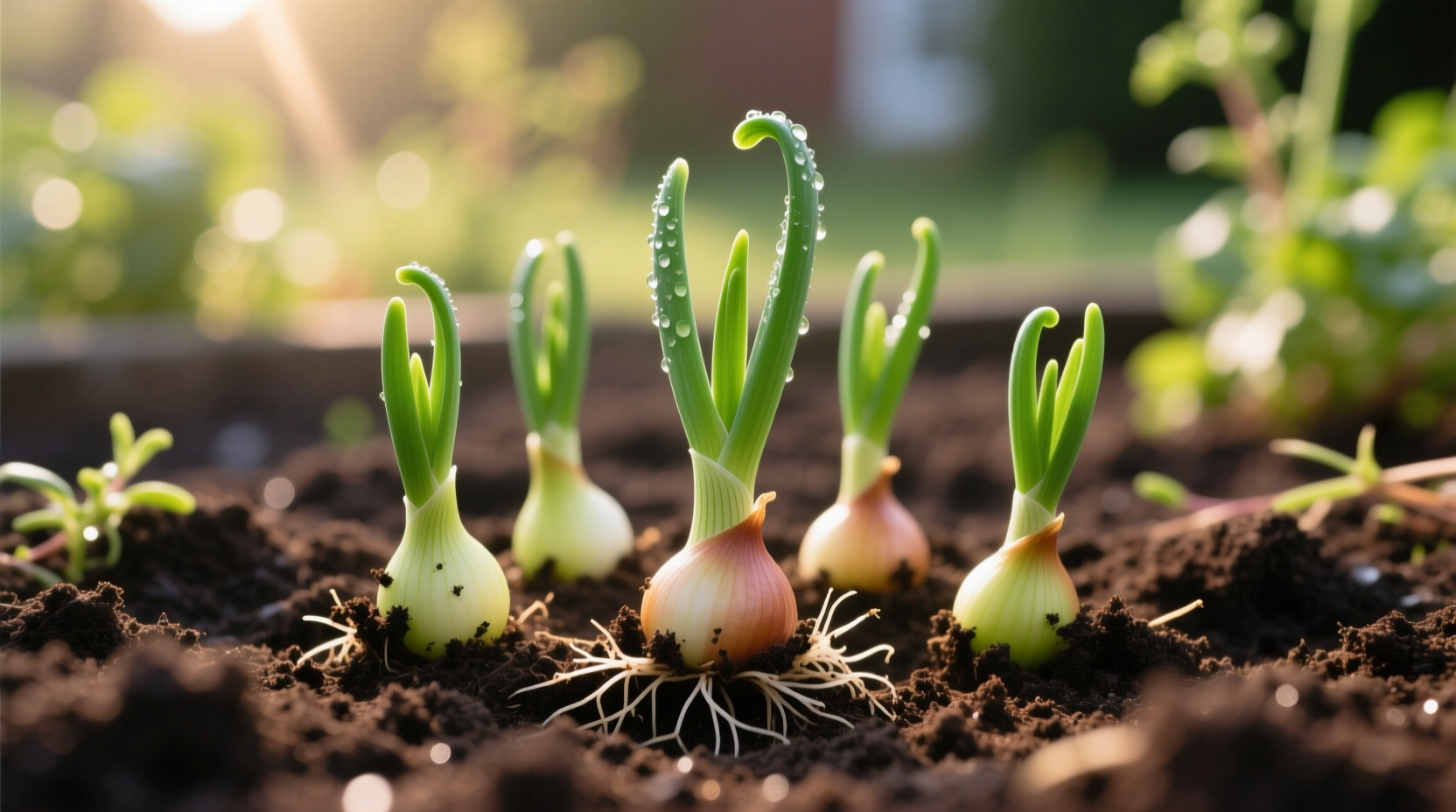Short day onion sets form bulbs when daylight reaches 10-12 hours, making them ideal for southern U.S. regions below 35°N latitude including Texas, Florida, and California. Plant these varieties between October and February for sweet, large onions perfect for fresh eating but with limited storage life compared to long day varieties.
Why Short Day Onions Thrive in Southern Climates
Understanding daylight requirements is crucial for successful onion growing. Short day onions begin bulb formation when daylight hits 10-12 hours—a threshold reached earlier in southern regions. This biological trigger makes them the only viable option for gardeners in warmer climates where long day varieties would bolt before forming proper bulbs.
Unlike their long day counterparts that require 14-16 hours of sunlight, short day onions complete their growth cycle before summer heat intensifies. This timing produces the famously sweet Vidalia and Texas Sweet varieties that dominate southern harvests. The lower sulfur content in southern soils further enhances their mild flavor profile.
| Onion Type | Daylight Trigger | Best Regions | Flavor Profile | Storage Life |
|---|---|---|---|---|
| Short Day | 10-12 hours | South of 35°N (TX, FL, GA) | Sweet, mild | 2-3 months |
| Intermediate Day | 12-14 hours | 30°-40°N (NC, OK) | Moderately sweet | 4-5 months |
| Long Day | 14-16 hours | North of 40°N (NY, WI) | Strong, pungent | 6-8 months |
This critical distinction explains why northern gardeners struggle with short day varieties—they form small bulbs prematurely when planted in spring. Southern growers face the opposite problem with long day types, which never receive enough daylight to trigger proper bulb development before summer heat stresses the plants.
Geographic Suitability and Planting Windows
Short day onions excel in USDA Hardiness Zones 7-11, particularly in regions with mild winters. The Southern Onion Council's agricultural data shows optimal performance between 25°-35°N latitude, where winter daylight naturally falls within the 10-12 hour range these varieties require.
Planting timing varies by specific location:
- Deep South (Florida, Southern Texas): October-November
- Mid-South (Georgia, Alabama): December-January
- West Coast (Southern California): January-February
Plant sets 1-2 inches deep, 4-6 inches apart in well-draining soil with pH 6.0-6.8. The University of Florida's Institute of Food and Agricultural Sciences recommends applying 1 inch of water weekly until bulbing begins, then increasing to 2 inches as bulbs develop.

Top Short Day Varieties for Home Gardeners
Choose varieties based on your specific needs and regional conditions:
- Texas Early Grand: The commercial standard for southern growers, producing 3-4 inch bulbs with exceptional sweetness. Ready in 90-100 days.
- Granex: The original Vidalia-type onion with golden skin and mild flavor. Requires well-drained sandy soil.
- Red Creole: Excellent for southern heat with deep red skin and strong flavor that stores slightly better than yellow varieties.
- White Bermuda: Traditional southern variety with flat shape and very mild flavor, best for immediate consumption.
Agricultural extension data from Texas A&M shows Texas Early Grand consistently outperforms other varieties in yield and bulb uniformity across southern test sites. For organic gardeners, Granex demonstrates better disease resistance in humid conditions according to Mississippi State University trials.
Avoiding Common Short Day Onion Problems
Even with proper variety selection, southern growers face specific challenges:
Early Bolting: Caused by exposure to temperatures below 50°F for extended periods. Prevent by planting after first frost but before soil warms significantly. If bolting occurs, remove flower stalks immediately and use bulbs promptly.
Pink Root Disease: This fungal issue appears as pink discoloration on roots. The University of Georgia recommends rotating crops every 3 years and using disease-free sets to prevent spread.
Small Bulb Formation: Often results from planting too early (when days are still long) or overcrowding. Maintain 6-inch spacing and verify your planting window aligns with your specific latitude.
Harvesting and Storage Guidelines
Short day onions signal readiness when tops naturally fall over and yellow. Gently lift bulbs and cure in a shaded, well-ventilated area for 2-3 weeks. Unlike storage onions, these varieties have thinner skins and higher moisture content, limiting their shelf life.
For maximum freshness:
- Store at 32-35°F with 65-70% humidity
- Use mesh bags or crates for air circulation
- Consume within 2-3 months for best quality
- Refrigerate sliced onions in airtight containers
The National Onion Association's post-harvest research confirms short day varieties lose quality significantly after 90 days, compared to 6-8 months for properly stored long day types. For extended use, consider caramelizing excess harvest or freezing chopped onions for cooking.
Troubleshooting Quick Reference
When problems arise, consult this decision tree:
- No bulb formation: Verify you're growing true short day variety; check planting date aligns with your latitude
- Small bulbs: Assess spacing (minimum 4 inches), soil fertility, and watering consistency
- Rotting sets: Improve soil drainage; avoid planting in waterlogged conditions
- Pest damage: Use floating row covers for thrips prevention; apply neem oil for aphids











 浙公网安备
33010002000092号
浙公网安备
33010002000092号 浙B2-20120091-4
浙B2-20120091-4